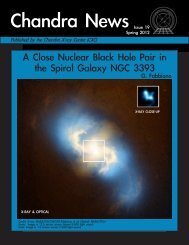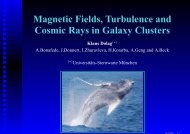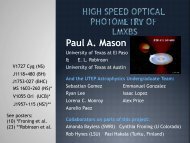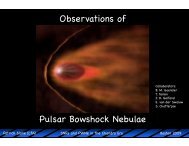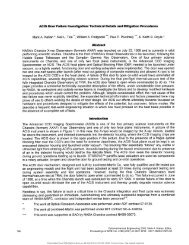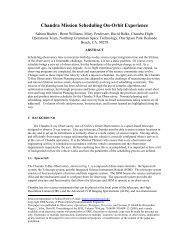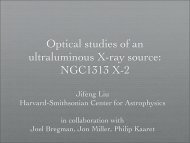observational overview of state transitions in x-ray binaries
observational overview of state transitions in x-ray binaries
observational overview of state transitions in x-ray binaries
You also want an ePaper? Increase the reach of your titles
YUMPU automatically turns print PDFs into web optimized ePapers that Google loves.
SOFT STATE<br />
The next <strong>state</strong> is called the s<strong>of</strong>t <strong>state</strong> or the thermal dom<strong>in</strong>ant <strong>state</strong>. As the name already<br />
suggests, the spectrum is very s<strong>of</strong>t and it is dom<strong>in</strong>ated by the thermal emission from the<br />
accretion disk - it is probably the best understood <strong>state</strong>. Weak non-thermal emission is also<br />
present <strong>in</strong> the form a weak tail. It’s orig<strong>in</strong> is not well understood. Variability is very weak,<br />
with amplitudes <strong>of</strong> only a few percent <strong>of</strong> the total flux. QPO can be seen together if one<br />
comb<strong>in</strong>es data from many observations. Unlike the hard <strong>state</strong>, the s<strong>of</strong>t <strong>state</strong> is only observed<br />
at high lum<strong>in</strong>osities.<br />
There is no significant radio emission from the central source <strong>in</strong> the s<strong>of</strong>t <strong>state</strong>.




